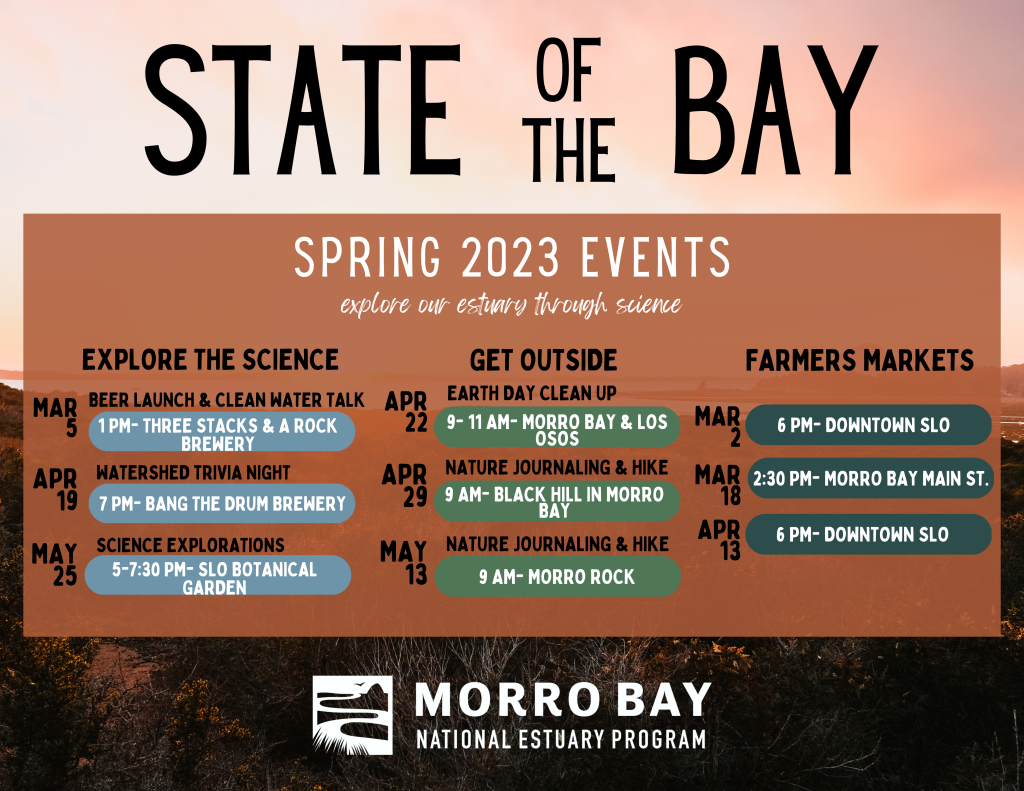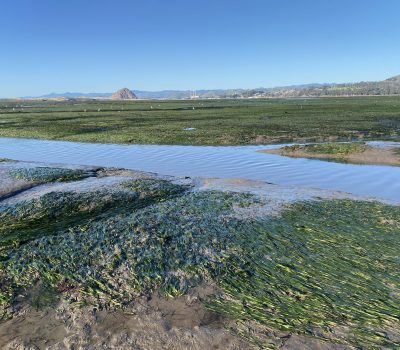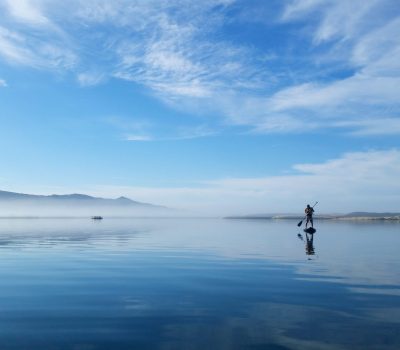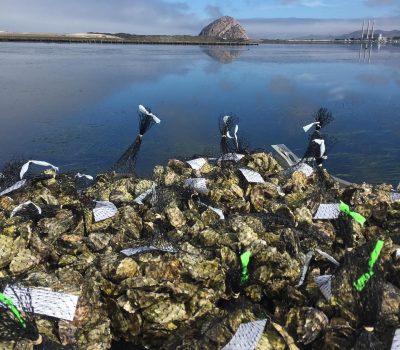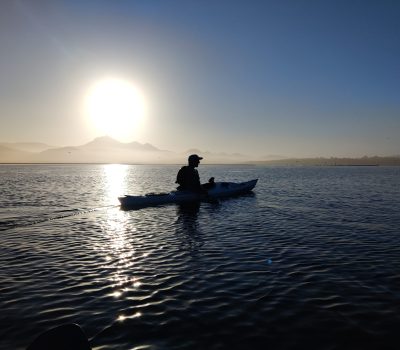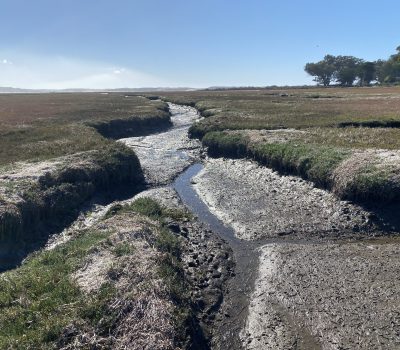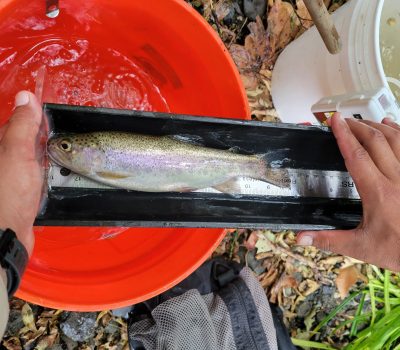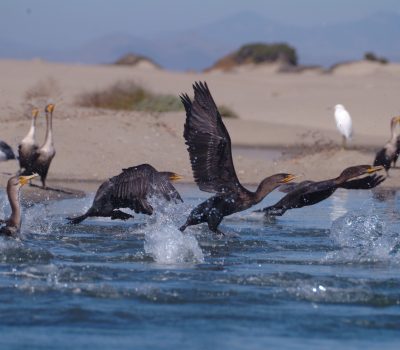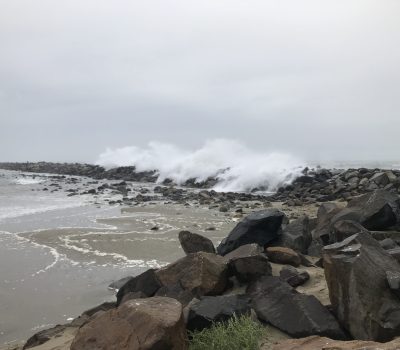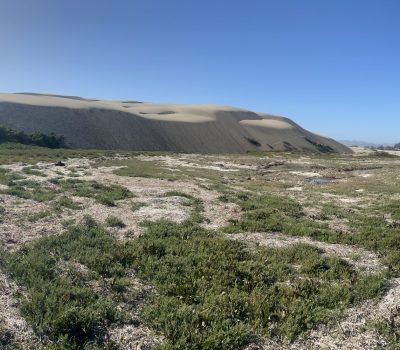Meet the Morro Bay Estuary
In Morro Bay, freshwater from two creeks runs down from the hills and mixes with saltwater that comes in with the tides from the ocean. This mix of salty and fresh waters makes Morro Bay an estuary—a unique place that supports an abundance of wildlife and a vibrant coastal community. People visit Morro Bay year-round to appreciate its beauty, to kayak and fish, and to watch the birds and sea otters that thrive here.
The Morro Bay National Estuary Program was established in 1995 to help protect and restore this special place. The Estuary Program is a local nonprofit that works collaboratively with citizens, agencies, and landowners. We restore degraded lands, track water quality and habitat conditions, and help locals and visitors alike understand how the estuary works and what we can all do to help preserve this nationally recognized resource.
The Estuary Program publishes a State of the Bay report like this one every three years. The report uses data gathered by our staff, volunteers, and partner organizations to examine the health of the Morro Bay estuary. It provides important information about environmental trends and guides local efforts to protect and restore this special place.
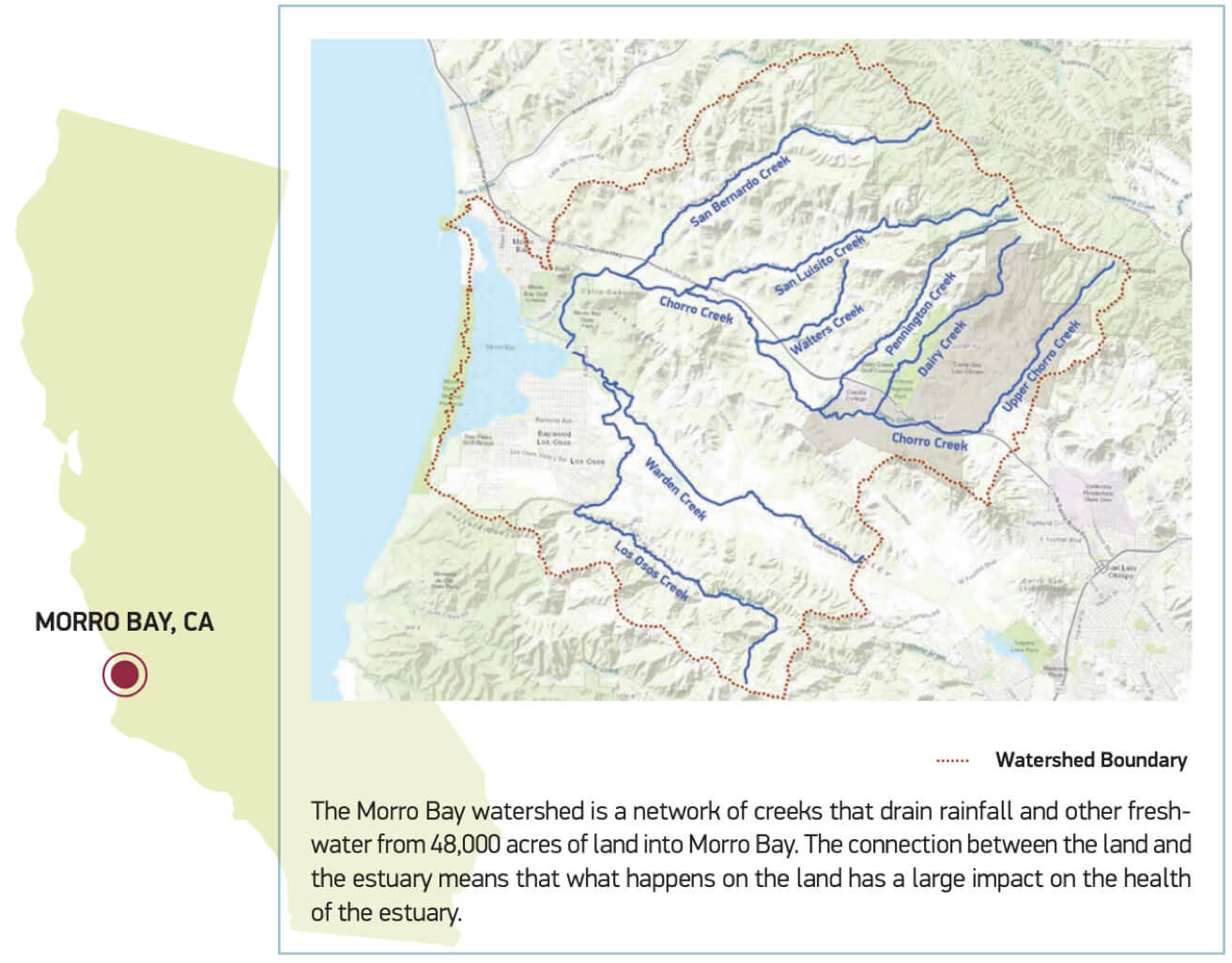
Questions Answered in this Report
What Can You Do to Help Morro Bay?
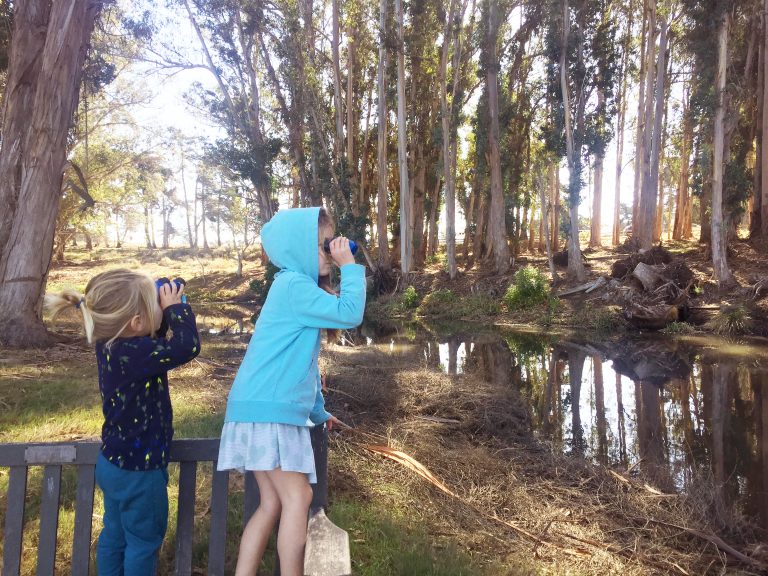
Your personal choices can have a positive effect on our environment! Small actions can make a real difference. Here are simple things you can do to help protect this special place that we all treasure.
Conserve Water.
Switching to a low-flow showerhead reduces water consumption and the energy needed to heat the water. They can pay for themselves in just four months.
Conserve Energy.
Wash clothes with cold water whenever possible. Heating water accounts for 90% of the energy a washing machine uses. To conserve water, wash full loads. If a partial load is needed, reduce the water level appropriately.
When purchasing electronics, LED light bulbs, and other household appliances, look for ENERGY STAR certification labels, which signify energy-efficient and cost-saving products.
Choose Natives.
When gardening, choose native plants for your yard as they are adapted to survive in our area without excess water or fertilizer.
Reduce Waste.
Food waste is the single largest contributor to landfills. When grocery shopping, buy only what you need. Compost your food scraps by placing them in your green bin. Learn more here.
Respect Wildlife.
Birds, otters, seals, and sea lions need space to thrive. Watch them from at least fifty yards away and get a closer look through binoculars or a camera.
For more ideas on what you can do to help lessen the impacts of climate change, visit EPA’s website at https://www.epa.gov/climate-change/what-you-can-do-about-climate-change
Add Insulation.
Adding an insulation blanket to your water heater reduces heat loss by 25 to 40% and will pay for itself in less than a year.
Join the Effort at the Estuary Program
Donate to support our monitoring, restoration, and education efforts. Every donation, no matter the size, helps.
Volunteer with us and our partners to support monitoring, restoration, education, and research efforts.
Learn more about this special place and how to help protect it by subscribing to our blog.
